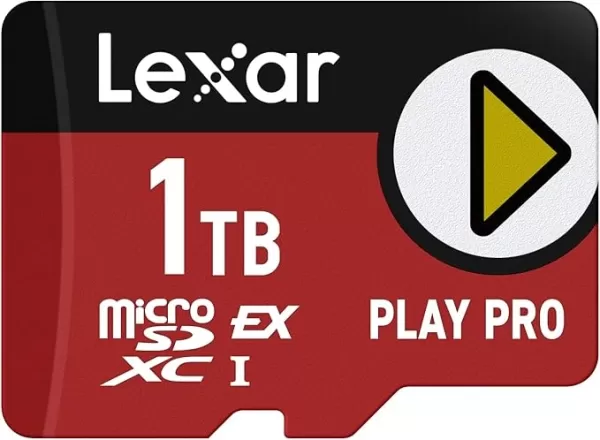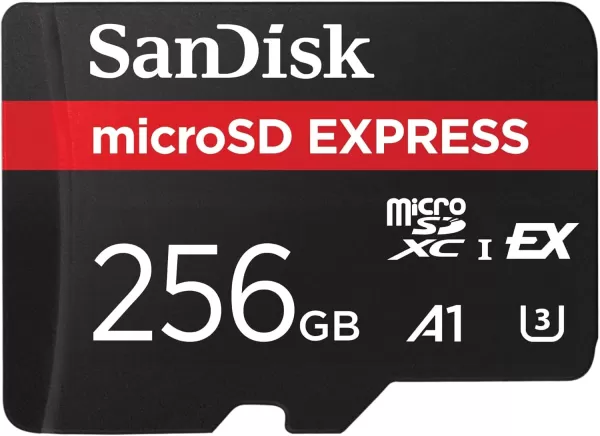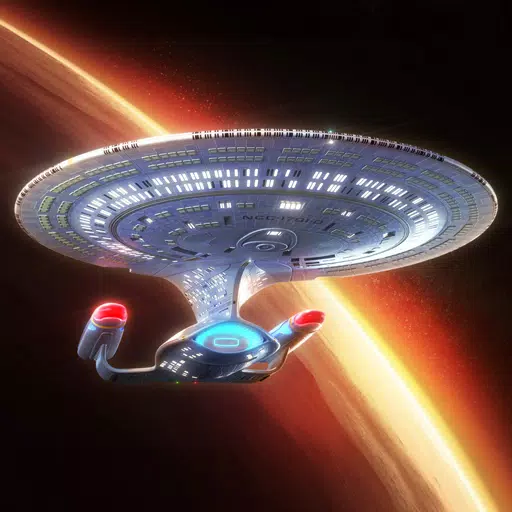Last week, Nintendo unveiled the highly anticipated Nintendo Switch 2, revealing a significant shift in its storage expansion strategy. The console exclusively supports MicroSD Express cards, which might be a hassle for those with existing MicroSD collections. However, this decision is rooted in the superior speed of MicroSD Express, offering performance that closely matches the UFS (Universal Flash Storage) used in the Switch 2's internal storage. This compatibility ensures that games loaded from expansion cards can perform just as efficiently as those installed internally, albeit at the expense of compatibility with less expensive, non-Express MicroSD cards.
MicroSD vs. MicroSD Express
The evolution of MicroSD cards has seen six distinct speed ratings over the years. Starting from the initial 12.5MB/s of the original SD cards, speeds have dramatically improved, reaching up to 312MB/s with SD UHS III. However, the game-changer came five years ago with the introduction of the SD Express standard, which significantly boosted performance through the use of a PCIe 3.1 interface, similar to that used by high-speed NVMe SSDs. This new interface allows full-sized SD Express cards to achieve transfer rates up to 3,940MB/s, a vast improvement over traditional SD cards.
While MicroSD Express cards don't reach the peak speeds of their full-sized counterparts, they still offer impressive performance, with speeds up to 985MB/s—three times faster than the fastest non-Express MicroSD cards.
Why Does the Switch 2 Require MicroSD Express?
Nintendo's decision to require MicroSD Express cards for the Switch 2, while not explicitly explained, aligns with a strategic focus on speed. The use of MicroSD Express cards, which leverage a PCIe 3.1 interface, ensures that games load significantly faster compared to using traditional UHS-I MicroSD cards. This move is indicative of a broader trend towards requiring high-speed storage in handheld gaming, potentially setting a new standard for future devices.
The internal storage of the Switch 2 has been upgraded to UFS from eMMC, further emphasizing Nintendo's commitment to performance. Early demonstrations suggest dramatic reductions in load times, with fast travel in games like "Breath of the Wild" seeing a 35% decrease, and initial load times improved by a factor of three, as reported by Polygon and Digital Foundry, respectively. These improvements are likely due to both the faster storage and enhanced CPU and GPU capabilities, which can process data more quickly. By requiring external storage to match these speeds, Nintendo ensures that future games won't be hindered by slower SD cards.
Additionally, this requirement future-proofs the console, allowing it to take advantage of even faster storage solutions as they become available. The current fastest standard for SD cards, SD 8.0, supports speeds up to 3,942MB/s for full-size cards, and while MicroSD Express can't reach these speeds yet, the potential for future upgrades is promising.
MicroSD Express Capacity Options
Despite their advantages, MicroSD Express cards have been slow to gain traction. At the time of the Switch 2's announcement, options are limited. Lexar, for instance, offers a single MicroSD Express card in capacities of 256GB, 512GB, and 1TB, with the 1TB variant priced at $199. SanDisk, on the other hand, lists a single 256GB MicroSD Express card, which matches the internal storage capacity of the Switch 2. As the console hits the market, we can expect an increase in available options, especially as companies like Samsung ramp up production of these high-speed cards.

Lexar Play Pro MicroSD Express
0See it at Amazon

SanDisk MicroSD Express 256GB
0See it at Amazon















